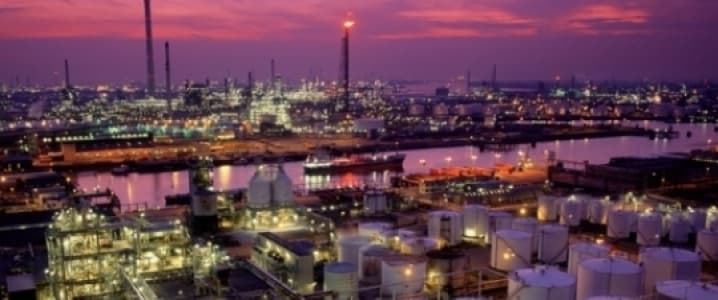In the latest indication of the strength of the recovery of global oil prices, European refineries are struggling to pay their crude bills as margins decline and demand weakens for some of their products, Bloomberg reports.
The profit curve for fuel oil, used by shippers and power stations, has fallen the most dramatically. High inflows of diesel in the Middle East are making that fuel difficult to bank on as well.
As a result of the capital crunch, refinery runs could become shorter, KBC Advanced Technologies, a research firm in the sector, says, though part of these fluctuations are owed to normal seasonal tendencies.
“Oil demand usually slackens in the first quarter and into the second quarter, so sooner or later refinery intakes will have to slacken and the usual signal for that is lower margins,” KBC chief economist Stephen George said.
The timing of the revised production strategy comes just as refinery margins reach a three-year low, Barclays says, which is particularly telling. The oil price crash in late 2014 largely shapes the market. Hydroskimming facilities, which refine fuels in a relatively unsophisticated process, have it tough because their techniques do not allow for diesel or gasoline production like complex refineries.
“Fuel oil cracks are paltry, which is impacting hydroskimming margins, with Urals margins in particular falling,” Ehsan Ul-Haq, of the London-based Resource Economist Ltd. told Bloomberg. Russia’s Urals crude grade is more sensitive to the strong markets because of its high fuel yield, he added. Related: OPEC Under Pressure As Oil Rally Continues
Data compiled by Bloomberg captures the high fuel shipments from the Middle East that make it difficult for European refined goods to compete in domestic markets. January totals are set to be the highest in a year, tanker tracker figures show.
“Given refiners have been trying to maximize runs to take advantage of the especially good margins in the last couple of years — now with lower margins, we could see slightly lower run levels all around,” says Salih Yilmaz, an analyst at Bloomberg Intelligence.
Though oil markets are gearing up for higher crude prices in the coming months, high production forecasts from the United States and foreboding statements from Russia regarding a potential withdrawal from the OPEC deal threaten to derail the recovery.
Countries in “OPEC are fearful of not only the shale response, but of deep water and of oil sands from Canada,” Citigroup Commodities Research head Ed Morse said in an official note. “There could be an agreement on ramping production back up over the summer.”
In November, the Vienna OPEC summit produced a pact to continue the 1.2-million-barrel-per-day reduction bloc-wide through 2018. An additional 600,000-bpd in cuts was promised by Russia and a group of allied countries with a major stake in world oil prices. Canada and the U.S. were not part of this group. Related: What’s The Limit For Permian Oil Production?
The agreement states that countries party to the deal will get a chance to “review” the deal come June, though the implications of this clause are unclear. Will members be able to withdraw early if prices look stronger than anticipated?
Russian Energy Minister Alexander Novak has suggested a Russian withdrawal could be a possibility sooner rather than later, but then reversed the volatility he caused with a simple statement of neutrality: “Right now, I think the agreement must continue and not react to momentary, passing changes.”
ADVERTISEMENT
Novak’s counterparts from OPEC nations are all still onboard with the deal. Even countries like Iraq and Iran, both recovering from different kinds of economic ailments over the past decade, support continued cuts. European refiners will not see margins jump anytime soon.
By Zainab Calcuttawala for Oilprice.com
More Top Reads From Oilprice.com:
- Iraq Is Troubling The Oil Majors
- Are Hedge Funds Pushing Oil Prices Too High?
- Oil Prices Rebound After EIA Reports Another Large Crude Draw


















